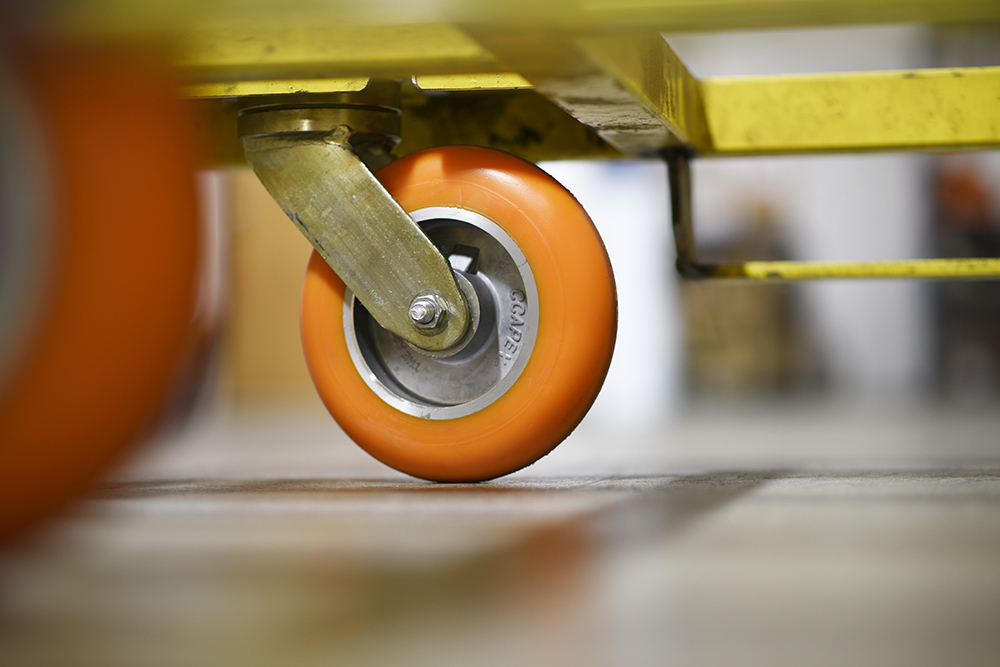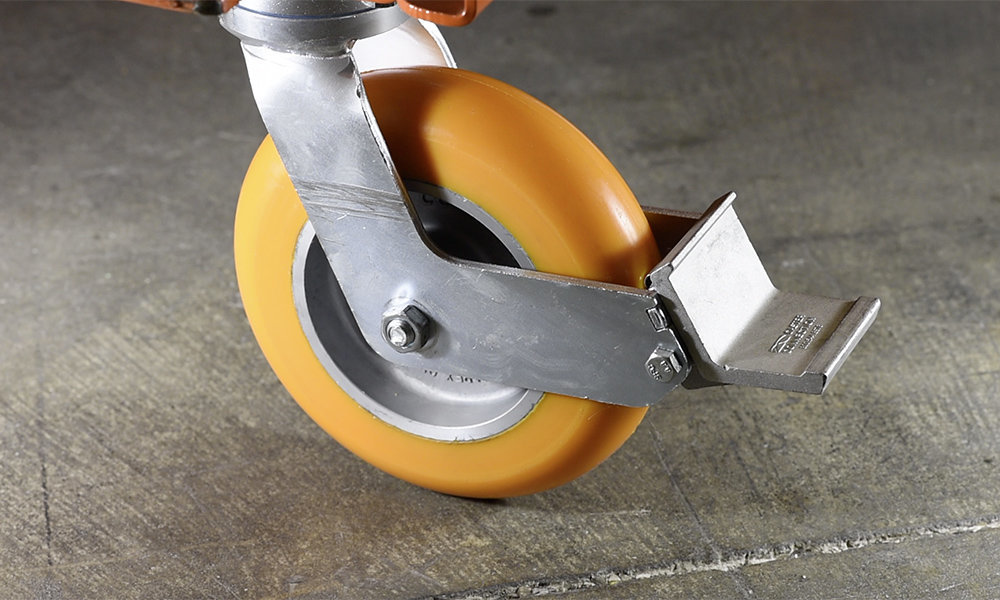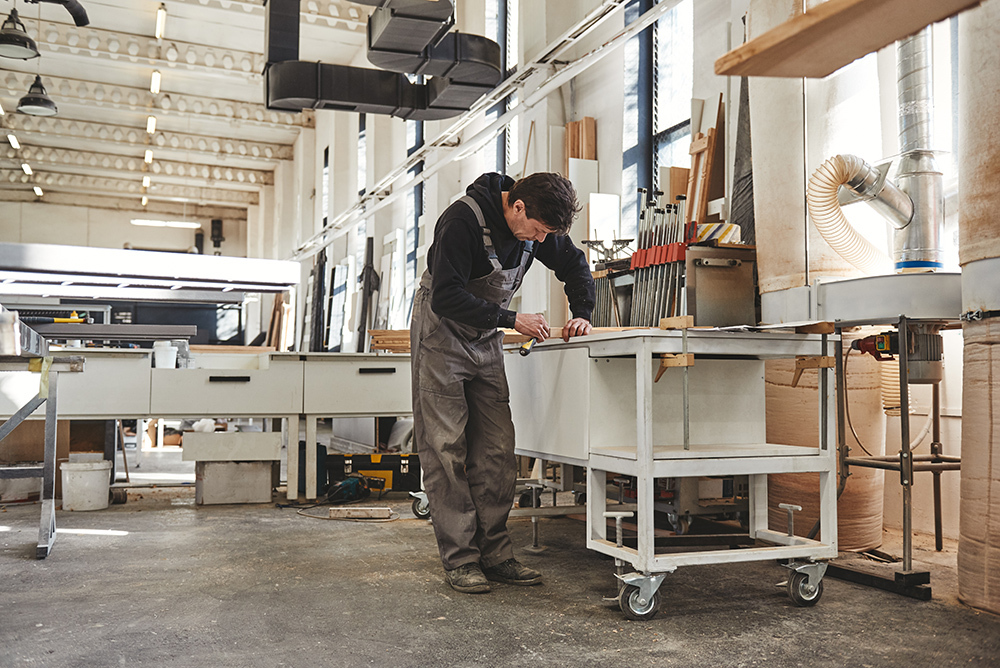The Best Casters for DIY 3D Printing Stations

Building your own 3D printing station is one of the most satisfying upgrades you can make as a DIYer. It gives you total control over how your equipment is organized, how your workspace flows, and how efficiently you can create. But there’s one small addition that makes a big difference: casters.

Mobility might not be the first thing that comes to mind when you think about 3D printing. Still, the ability to move your setup without compromising stability is a serious advantage.
Why Mobility Matters for 3D Printing

You don’t need to move your printer every day, but having the option makes your setup more versatile. Whether you're printing with different materials, sharing space, or just doing routine maintenance, mobility creates flexibility.
Here’s what mobile 3D printer stations allow you to do:
- Reposition your station to improve airflow or access outlets
- Pull your setup away from the wall to clean or make adjustments
- Shift your layout as your equipment or workspace grows
- Create a more adaptable work area in small or shared spaces
A mobile setup helps you stay organized and work more efficiently without sacrificing precision.
How to Maintain Stability While Printing

3D printers are sensitive to movement. Even small shifts during a print can cause misalignment, layer issues, or failed builds. But mobility and stability don’t have to be opposites. The right caster setup can give you both.
Here’s how to keep your station solid while printing:
- Use four swivel casters with locking brakes
- Choose total lock brakes to secure both the wheel and the swivel
- Look for face contact or tech lock brakes for stronger holding force than traditional side lock brakes
- Make sure your workbench frame is sturdy and level
When your casters lock correctly and your bench is balanced, your setup will stay put even during long, high-detail prints.
Choosing Caster Materials for 3D Printing Environments
Most 3D printing setups involve a mix of heat, residue, and cleaning chemicals. From heated beds and extruders to solvents like isopropyl alcohol, the environment around your printer can take a toll on low-quality wheels.
That’s why it’s important to select caster materials that hold up well over time.
Here are the best options to consider:
1. Polyurethane
Polyurethane wheels are one of the most popular choices for mobile workstations, and for good reason. They’re resistant to a wide range of chemicals and cleaning agents, including isopropyl alcohol. These wheels roll quietly and smoothly over hard surfaces like concrete, epoxy, or tile without leaving marks or scuffs. Polyurethane also handles moderate heat well, making it a great all-around choice for home and light industrial 3D printing stations.

2. Thermoplastic Rubber (TPR)
Thermoplastic rubber combines the floor protection of rubber with the durability of synthetic materials. These wheels are soft and quiet, making them ideal for home or shared spaces where noise and vibration need to be minimized. TPR holds up well against most cleaning agents, but it’s best suited for light to medium-duty use in environments that don’t generate excessive heat. If your printer station runs cool and clean, TPR is a solid option.

3. Phenolic
Phenolic wheels are designed for tough industrial environments. They resist high temperatures, grease, oil, and a range of chemicals, and they perform well under heavy loads. However, they tend to be harder and louder than polyurethane wheels and can be more abrasive on certain floor types. For most 3D printing stations—especially in home or light industrial settings—polyurethane is the better all-around choice. It offers a smoother, quieter ride, protects floors, and handles the typical heat and residue associated with 3D printing, which is why we recommend it for the majority of DIY setups.

Avoid soft rubber or plastic wheels that can degrade when exposed to heat or solvents. A good caster should perform reliably even when conditions around your printer vary from day to day.
At Caster Connection, we offer a variety of polyurethane wheel lines engineered for performance, floor protection, ergonomics, and chemical resistance. Explore options like CC Apex, CC Stout, and CC Apex HD to find the right fit for your printer station or workspace.
Shop Polyurethane Casters
6" CC Peak Maintenance-Free Swivel CC Stout HD Caster w/ Built-In Brake
SKU: CCSTOUT-6S-EMF-BIB
-
- Overall Height
- 7-1/2"
- Wt. Capacity
- 1,200 lbs.
- Wheel Width
- 2"
- Wheel Diameter
- 6"
5" CC Stout HD Kingpinless Swivel Caster w/ Built in Brake
SKU: CC-2150-500200-40-T1-BIB
-
- Overall Height
- 6-1/2"
- Wt. Capacity
- 1,050 lbs.
- Wheel Width
- 2"
- Wheel Diameter
- 5"
6" CC Apex set - 2 swivel/2 rigid
SKU: CC-10/1210-600200-40-T1-SET4
ALT-SKU: CCAPEX-6S/R-set-2s/2r
-
- Overall Height
- 7-1/2"
- Wt. Capacity
- 1,000 lbs.
- Wheel Width
- 2"
- Wheel Diameter
- 6"
6" CC Peak Maintenance-Free Swivel CC Apex Caster
SKU: CC-3110-600200-40-T1
ALT-SKU: CCAPEX-6S-EMF
-
- Overall Height
- 7-1/2"
- Wt. Capacity
- 1,000 lbs.
- Wheel Width
- 2"
- Wheel Diameter
- 6"
SKU: DC-2810-600200-40-T3
ALT-SKU: CCAPEX-6R-TP3
-
- Overall Height
- 7-1/2"
- Wt. Capacity
- 1,000 lbs.
- Wheel Width
- 2"
- Wheel Diameter
- 6"
6" CC Peak Maintenance-Free Swivel CC Apex Caster w/ Built-In Brake
SKU: CC-3210-600200-40-T1-BIB
ALT-SKU: CCAPEX-6S-EMF-BIB
-
- Overall Height
- 7-1/2"
- Wt. Capacity
- 1,000 lbs.
- Wheel Width
- 2"
- Wheel Diameter
- 6"
Your 3D Printing Station, Upgraded

With the right caster setup, your 3D printer station can be both flexible and rock solid. You’ll gain the freedom to rearrange your workspace, clean and maintain your setup more easily, and scale your station as your projects grow.
Ready to upgrade your 3D printing station? Contact us for help choosing the best casters or explore our full range of mobility solutions built for maker environments.
